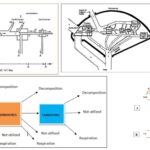IB Biology 10 Views 1 Answers
Sourav PanLv 9November 8, 2024
What forms a community, and what interactions are involved?
What forms a community, and what interactions are involved?
Please login to save the post
Please login to submit an answer.
Sourav PanLv 9May 15, 2025
A community in ecology is defined as a group of populations of different species that coexist and interact within a specific geographical area at the same time. These communities can vary widely in structure, composition, and dynamics, influenced by both biotic (living) and abiotic (non-living) factors.
Characteristics of a Community
- Species Diversity: Communities are characterized by a variety of species, including plants, animals, fungi, and microorganisms. This diversity can be local or regional and plays a crucial role in ecosystem stability and resilience.
- Growth Forms and Structure: Communities can be analyzed based on the major growth forms of their organisms, such as trees, shrubs, and herbs. The structural complexity of a community is determined by these growth forms, influencing habitat availability and species interactions.
- Dominance: Not all species within a community have equal importance; some species dominate due to their abundance or ecological roles. Dominant species can significantly influence the community’s structure and function.
- Trophic Structure: Communities have a defined trophic structure that outlines how energy flows through different levels—from producers (autotrophs) to various levels of consumers (herbivores, carnivores) and decomposers.
- Relative Abundance: This refers to the proportion of different species within the community, highlighting which species are more common or rare.
Interactions Within a Community
Community interactions involve various relationships between species that can be classified into several types:
- Competition: Species compete for limited resources such as food, space, or light. This interaction can be interspecific (between different species) or intraspecific (within the same species).
- Predation: This interaction involves one organism (the predator) hunting another (the prey). Predation plays a significant role in population control and natural selection.
- Symbiosis: This encompasses various types of close interactions between species:
- Mutualism: Both species benefit from the interaction (e.g., bees pollinating flowers).
- Commensalism: One species benefits while the other is neither helped nor harmed (e.g., barnacles on whales).
- Parasitism: One organism benefits at the expense of another (e.g., ticks on mammals).
- Amensalism: In this interaction, one species is harmed while the other is unaffected (e.g., larger plants shading smaller ones) .
These interactions are crucial for driving ecological processes such as nutrient cycling, energy flow, and population dynamics within communities.
0
0 likes
- Share on Facebook
- Share on Twitter
- Share on LinkedIn
0 found this helpful out of 0 votes
Helpful: 0%
Helpful: 0%
Was this page helpful?




